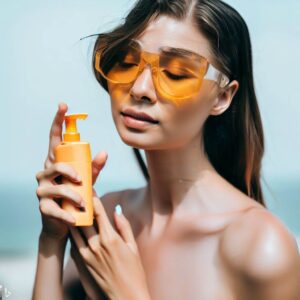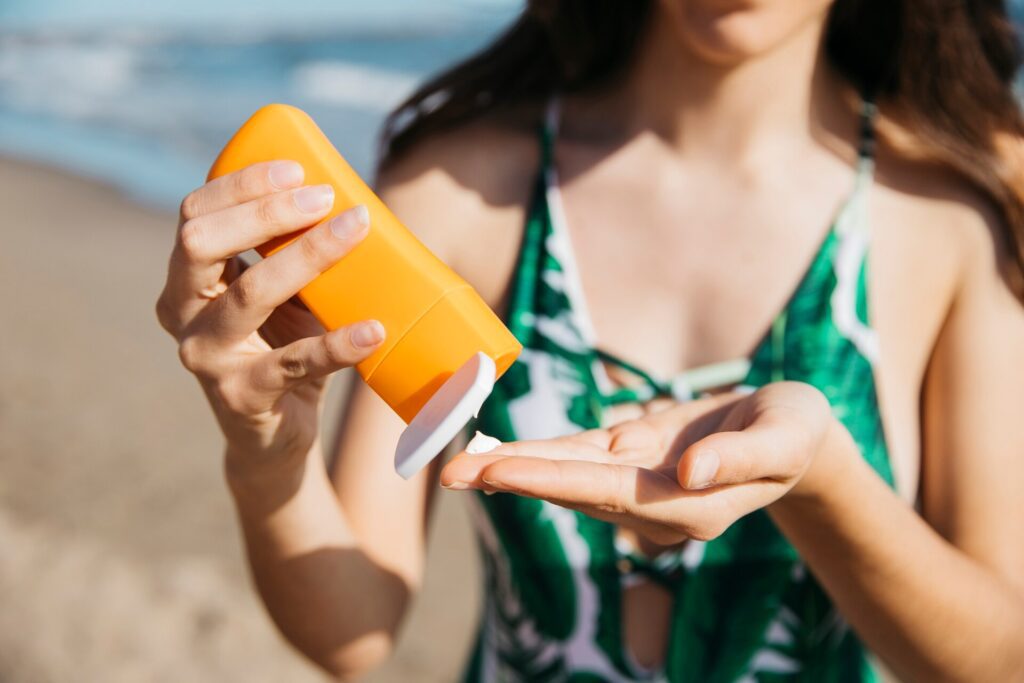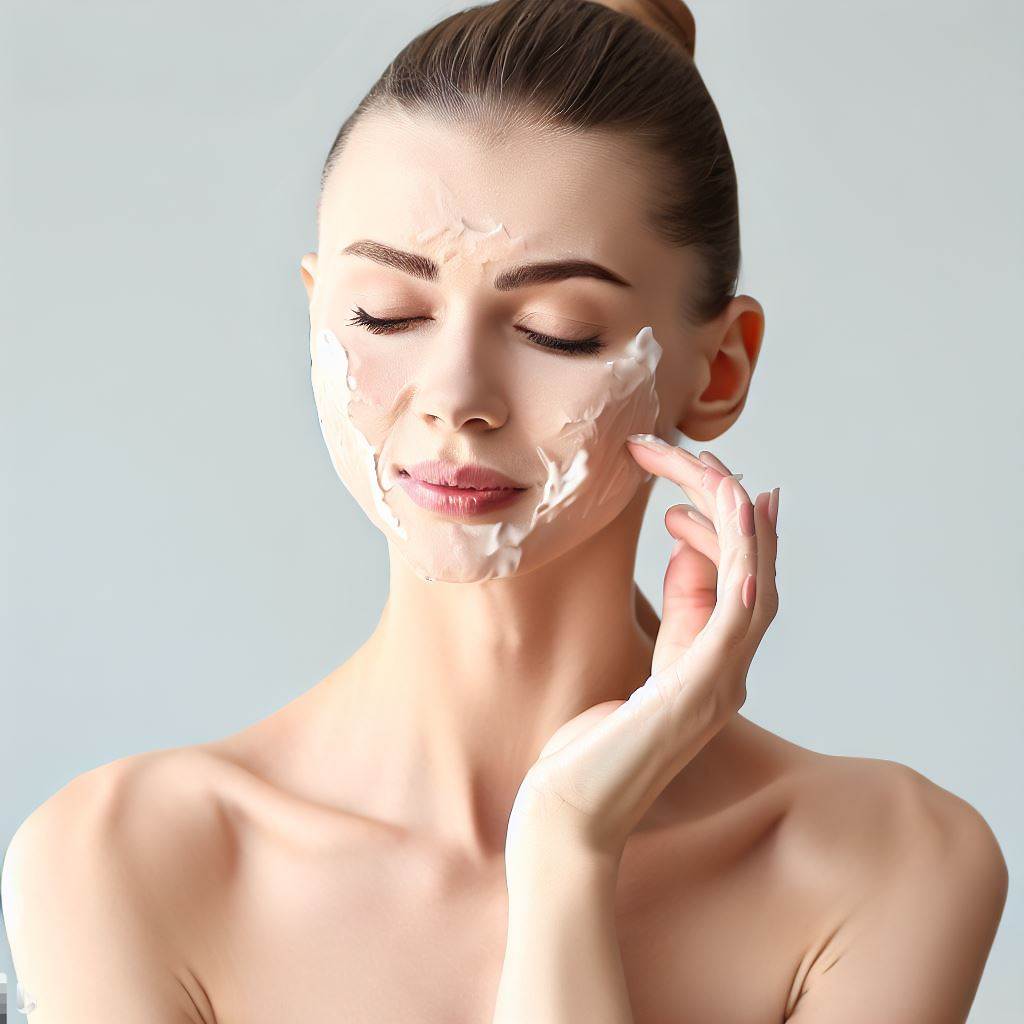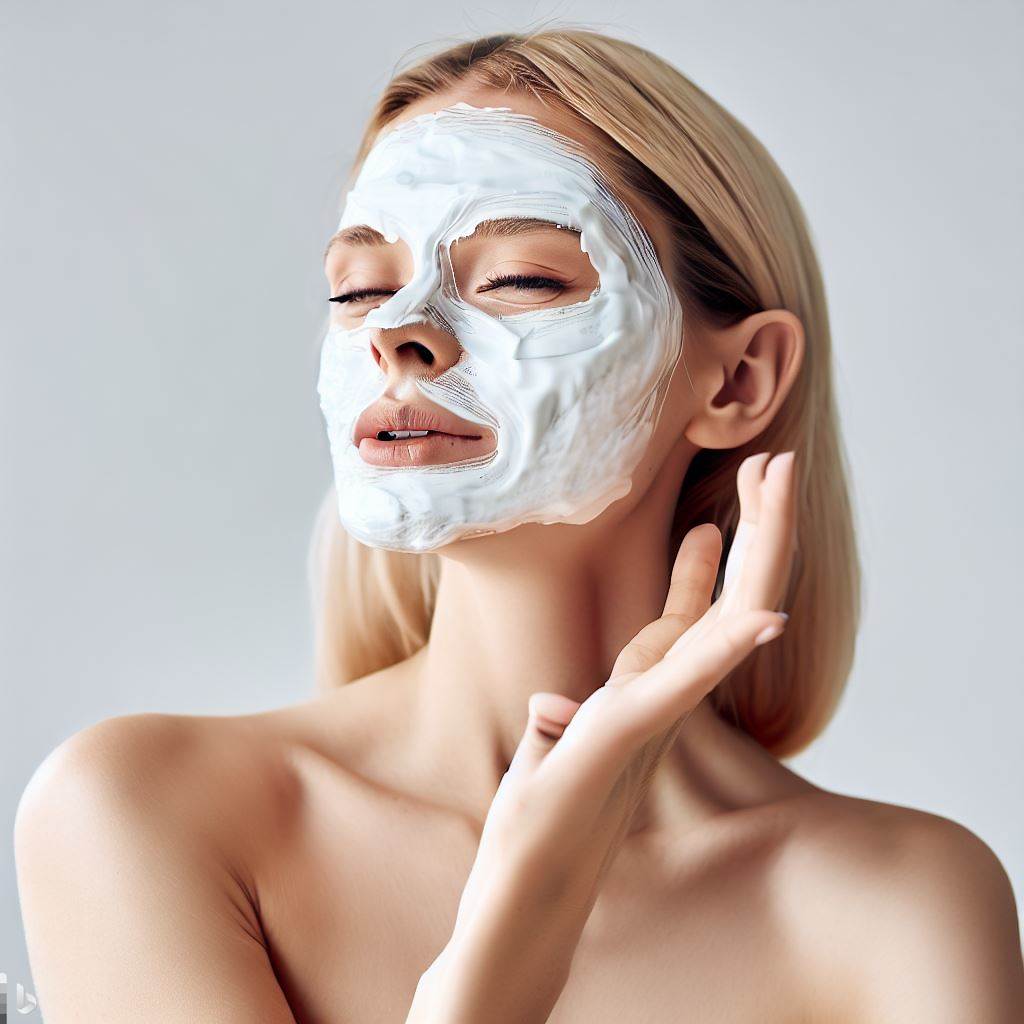I. Introduction
A. Brief explanation of the importance of sun protection


Sun protection is crucial for maintaining healthy skin and reducing the risk of sun damage, premature aging, and skin cancer. The sun emits harmful ultraviolet (UV) rays, including UVA and UVB, which can penetrate the skin and cause various harmful effects. These include sunburn, sunspots, wrinkles, and an increased risk of skin cancer. Therefore, using effective sun protection measures is essential for maintaining skin health and overall well-being.
B. Overview of sunblock and sunscreen
Sunblock and sunscreen are two popular forms of sun protection that are widely used. While both aim to protect the skin from harmful UV radiation, they differ in terms of their composition, mechanism of action, and application. Sunblock typically contains physical blockers like titanium dioxide or zinc oxide, which reflect and scatter UV rays. On the other hand, sunscreen usually contains chemical filters that absorb UV radiation and convert it into heat.
C. Comparing sunblock and sunscreen to determine which is better for sun protection
![]()
![]()


In this article, we will compare sunblock and sunscreen to evaluate their effectiveness, advantages, limitations, and suitability for different individuals and situations. By understanding the characteristics and differences between these two forms of sun protection, individuals can make informed choices to safeguard their skin from the damaging effects of UV radiation.
II. Understanding Sunblock
![]()
![]()
![]()
A. Definition and composition of sunblock


Sunblock, also known as physical sunscreen, is a type of sun protection product that forms a physical barrier on the skin’s surface. It contains ingredients such as titanium dioxide and zinc oxide, which act as physical blockers. These mineral-based ingredients work by reflecting and scattering UV radiation away from the skin, thus preventing it from penetrating and damaging the skin cells.
B. Mechanism of action: Physical vs. chemical protection
The mechanism of action of sunblock is primarily physical in nature. When applied to the skin, sunblock forms a protective layer that sits on top of the skin. It acts as a shield, reflecting UV rays away from the skin and preventing them from being absorbed.
C. Pros and cons of sunblock
1. Advantages of sunblock
i. Broad-spectrum protection: Sunblock offers protection against both UVA and UVB rays, making it an effective option for comprehensive sun protection.
ii. Immediate protection: Sunblock provides instant protection upon application, as there is no waiting time required for it to become effective.
iii. Less risk of skin irritation: Sunblock tends to be less irritating to the skin, making it suitable for individuals with sensitive or reactive skin.
2. Limitations and drawbacks of sunblock
i. Visible residue: Sunblock may leave a white or chalky residue on the skin, which some individuals may find undesirable, especially on darker skin tones.
ii. Thicker consistency: Sunblock can have a thicker consistency compared to sunscreen, making it feel heavier on the skin.
iii. Potential for rubbing off: Sunblock may rub off more easily, especially during activities that involve sweating or water exposure, requiring more frequent reapplication.
Understanding the characteristics and limitations of sunblock will help individuals make an informed decision when choosing sun protection products that best suit their needs and preferences.
III. Understanding Sunscreen


A. Definition and composition of sunscreen
Sunscreen is a type of sun protection product that contains chemical filters designed to absorb UV radiation before it reaches the skin. Common chemical filters used in sunscreens include oxy ben zone, avobenzone, and octin oxate. These filters work by absorbing UV rays and converting them into less harmful forms of energy, such as heat.
B. Mechanism of action: Chemical filters and absorption
Sunscreen works by applying a thin layer of the product onto the skin. The chemical filters present in sunscreen penetrate the top layers of the skin and absorb UV radiation. As a result, the absorbed UV rays are converted into heat, minimizing the potential damage caused by the sun’s rays.
C. Pros and cons of sunscreen
1. Advantages of sunscreen
i. Ease of application: Sunscreen tends to have a lighter and more fluid consistency compared to sunblock, making it easier to apply and spread evenly over the skin.
ii. Invisible on the skin: Unlike sunblock, sunscreen is typically transparent on the skin, reducing the visibility of any residue or white cast.
iii. Longer-lasting protection: Sunscreen often provides longer-lasting protection, as the chemical filters are designed to remain effective for an extended period of time.
2. Limitations and potential concerns with sunscreen
i. Potential for skin irritation: Some individuals may experience skin sensitivity or irritation due to the chemical filters present in sunscreen. It is important to choose a sunscreen formulation suitable for one’s skin type and sensitivity.
ii. Absorption into the skin: The chemical filters in sunscreen can penetrate the skin, and there have been concerns about the potential health effects associated with the absorption of certain chemical ingredients. However, regulatory authorities have deemed them safe for use in sunscreens within certain concentrations.
iii. Delayed effectiveness: Sunscreen requires a certain amount of time to be absorbed into the skin and become effective. It is recommended to apply sunscreen approximately 15 to 30 minutes before sun exposure.
Understanding the characteristics and potential concerns related to sunscreen will assist individuals in making informed decisions about sun protection products that align with their specific needs and preferences.
IV. Factors to Consider in Choosing Sun Protection
![]()
![]()
![]()


- Sun protection factor (SPF) and broad-spectrum protection
When choosing sun protection, consider the sun protection factor (SPF) and whether the product offers broad-spectrum protection. SPF indicates the level of protection against UVB rays, which cause sunburn. Higher SPF values provide greater UVB protection, but it’s important to note that no sunscreen can block 100% of UV rays. Additionally, look for products labeled as broad-spectrum, as they protect against both UVA and UVB rays, offering more comprehensive sun protection.
- Application and ease of use
Consider the application method and ease of use when selecting sun protection. Sunblock usually comes in a cream or lotion form and requires thorough application to ensure complete coverage. Sunscreen often comes in a lotion, spray, or gel form, offering more options for application. Choose a product that suits your preference and is easy to apply, ensuring that you can effectively cover all exposed areas of your skin.
- Skin type and personal preferences
Different skin types have varying needs when it comes to sun protection. For sensitive or reactive skin, sunblocks with physical blockers may be more suitable as they are less likely to cause irritation. However, individuals with oily or acne-prone skin might prefer lightweight sunscreens with non-comedogenic formulas that won’t clog pores. Consider your skin type, any specific concerns or sensitivities, and choose a product that meets your individual needs and preferences.
- Environmental and health considerations
Environmental and health factors should also be considered. If you plan to swim or engage in water activities, look for water-resistant or waterproof sun protection options to ensure prolonged protection even when exposed to water. Moreover, consider any personal or environmental health concerns. Some individuals may prefer sun protection products that are reef-safe, meaning they are formulated without chemicals harmful to coral reefs, in order to minimize environmental impact.
Taking these factors into account will help you select the most suitable sun protection product for your needs, ensuring effective and personalized sun protection. Remember to consult with a dermatologist or healthcare professional for personalized advice, especially if you have specific skin conditions or concerns.
V. Comparison of Sunblock and Sunscreen
A. Effectiveness against UV radiation


Both sunblock and sunscreen offer protection against UV radiation, but they differ in their mechanisms of action. Sunblock provides physical protection by reflecting and scattering UV rays, making it effective immediately upon application. On the other hand, sunscreen relies on chemical filters to absorb UV rays, requiring a short waiting period for the product to be absorbed and become effective. Both can provide adequate protection when used correctly, but individuals may have personal preferences based on their desired level of sun protection.
B. Protection duration and reapplication
Sunblock tends to have a longer-lasting effect compared to sunscreen. The physical barrier created by sunblock stays on the skin until it is washed off, providing continuous protection. Sunscreen, however, may need to be reapplied more frequently, especially after swimming, sweating, or extended sun exposure. Some sunscreens offer water-resistant or waterproof properties, extending their duration of effectiveness. Understanding the specific instructions and recommendations on reapplication is important to maintain optimal sun protection.
C. Physical appearance and feel on the skin
Sunblock often leaves a visible white or chalky residue on the skin due to its physical blockers. While this can be a drawback for individuals concerned about aesthetics, advancements in sunblock formulations have led to options with reduced white cast. Sunscreen, on the other hand, typically absorbs into the skin and is less visible, providing a more cosmetically appealing option for some users. Consider personal preferences for the appearance and feel on the skin when choosing between sunblock and sunscreen.
- Suitability for different activities and environments
Sunblock’s physical barrier makes it effective in various activities and environments, such as water sports, outdoor activities, or prolonged sun exposure. It tends to adhere well to the skin, making it less likely to rub off during physical activities. However, its thicker consistency may feel heavier on the skin, which could be a consideration for individuals who prefer lighter textures. Sunscreen offers more versatility in application and is often available in convenient spray or gel forms, making it suitable for daily use or under makeup.
Considering the specific needs, preferences, and intended use can help determine whether sunblock or sunscreen is better suited for an individual’s lifestyle and desired sun protection. Both forms of sun protection offer advantages and limitations, and the choice ultimately depends on personal preferences, skin type, and specific circumstances. Regular application and reapplication of either sunblock or sunscreen are crucial for maintaining effective sun protection.
VI. Conclusion
A. Recap of the main points discussed
In this article, we have explored the differences between sunblock and sunscreen to determine which is better for sun protection. Sunblock, also known as physical sunscreen, acts as a physical barrier, reflecting and scattering UV rays away from the skin. Sunscreen, on the other hand, contains chemical filters that absorb UV radiation.
We discussed the advantages of sunblock, such as its broad-spectrum protection and immediate effectiveness, as well as its limitations, such as potential visible residue and thicker consistency. Similarly, we highlighted the benefits of sunscreen, including ease of application, invisible appearance, and longer-lasting protection, while considering potential concerns like skin irritation and ingredient absorption.
B. Consideration of individual needs and preferences
When choosing between sunblock and sunscreen, it is important to consider individual needs and preferences. Factors such as skin type, desired level of protection, application method, and personal preferences regarding aesthetics and texture play a significant role in the decision-making process. Understanding the specific needs and characteristics of one’s skin will help in selecting the most appropriate sun protection option.
C. Emphasize the importance of regular sun protection
Regardless of the choice between sunblock and sunscreen, it is crucial to emphasize the importance of regular sun protection. UV radiation poses risks to the skin, including sunburn, premature aging, and an increased risk of skin cancer. Applying sun protection consistently and following recommended reapplication guidelines is essential for maintaining effective sun protection and safeguarding skin health.
D. Suggestion to consult with a dermatologist for personalized advice
It is always recommended to consult with a dermatologist or healthcare professional for personalized advice regarding sun protection. They can provide tailored recommendations based on an individual’s specific skin type, concerns, and lifestyle. Dermatologists can also offer guidance on choosing the most suitable sun protection products and provide additional measures to protect the skin from sun damage.
By considering the information provided in this article and seeking professional guidance, individuals can make informed decisions about sun protection, ensuring that they prioritize their skin health and minimize the risks associated with UV radiation. Remember, protecting your skin from the sun is an essential part of maintaining overall wellness.




